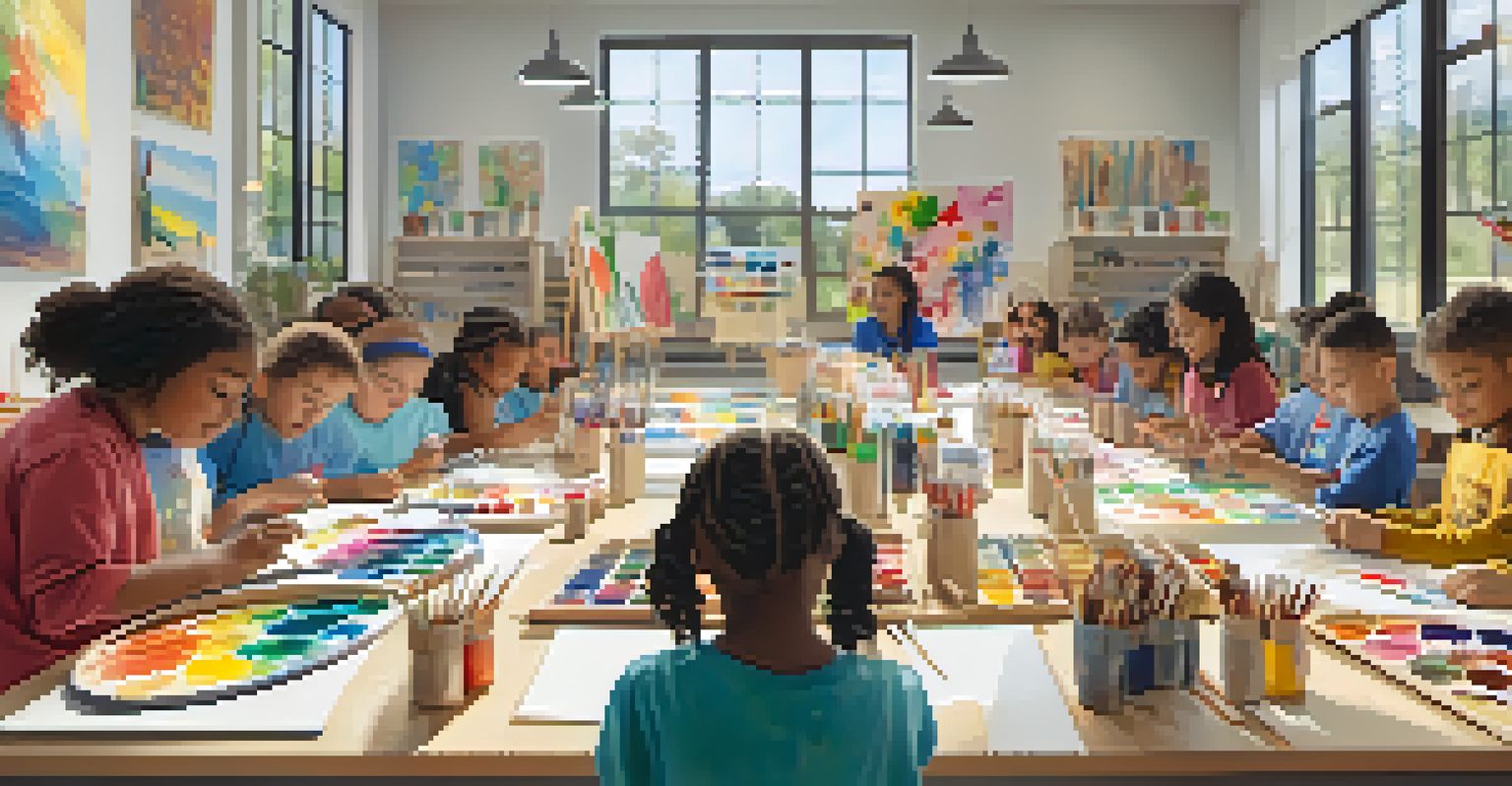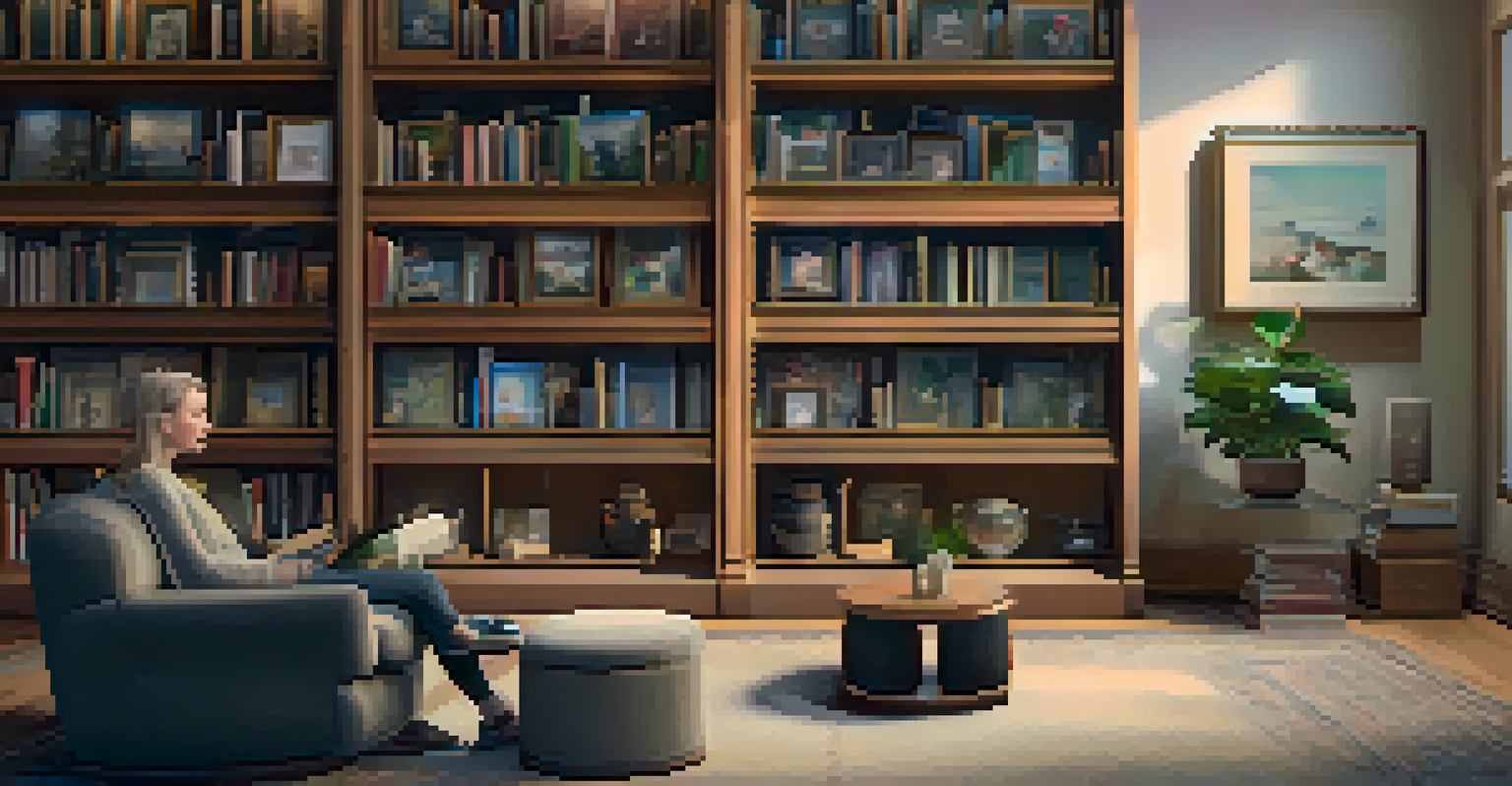Art Accessibility: Bridging the Gap Across Socioeconomic Lines

Understanding Art Accessibility in Today’s World
Art accessibility refers to the ability of all individuals, regardless of socioeconomic status, to access and engage with art. This concept goes beyond just visiting museums; it encompasses various forms of art, including music, theater, and public installations. By ensuring that everyone can participate in cultural experiences, we enrich society as a whole.
Art enables us to find ourselves and lose ourselves at the same time.
In a world where art can sometimes feel exclusive or elitist, recognizing the barriers many face is crucial. Socioeconomic factors can limit access to art, making it seem like a distant dream for some individuals. This reality highlights the need for initiatives that promote inclusion and equal opportunities for everyone.
Art accessibility is not just a noble goal; it’s essential for fostering creativity and innovation. When diverse voices and perspectives are included, art evolves, reflecting the true fabric of society. Ultimately, making art accessible helps cultivate a sense of belonging and community spirit.
The Role of Community Programs in Enhancing Accessibility
Community programs play a pivotal role in bridging the gap in art accessibility. These initiatives often target underserved populations, providing free or low-cost access to artistic experiences. By hosting workshops, exhibitions, and performances in local neighborhoods, these programs help demystify the world of art.

For example, many cities have launched outreach programs that bring art directly to schools, libraries, and public spaces. These initiatives not only introduce individuals to various art forms but also encourage participation in ways that feel welcoming and familiar. This approach helps create a more inclusive atmosphere where everyone can appreciate the arts.
Art Accessibility Benefits Everyone
Ensuring that art is accessible to all individuals enriches society and fosters creativity.
Moreover, community programs often collaborate with local artists, fostering a sense of pride and ownership within the community. By showcasing local talent and cultural heritage, these programs create a rich tapestry of artistic expression that resonates with people from all walks of life.
Digital Platforms: Expanding Art Accessibility Online
In our increasingly digital world, online platforms are transforming how we access art. Virtual galleries, online workshops, and social media campaigns enable individuals to experience art from the comfort of their homes. This shift has proven especially beneficial for those who may have physical or financial barriers to attending in-person events.
The arts are not a luxury. They are a necessity for our existence.
For instance, museums and galleries have embraced virtual tours, allowing anyone with an internet connection to explore their collections. This democratization of access means that art lovers from all corners of the globe can engage with exhibits that pique their interest. It also opens doors for educational programs that reach a wider audience.
However, it’s essential to ensure that this digital transformation doesn’t leave anyone behind. Efforts must be made to address the digital divide, ensuring that all individuals, regardless of their socioeconomic status, have access to the technology needed to explore these online resources.
The Importance of Inclusivity in Art Education
Art education is a foundational element in making art accessible. By fostering creativity and critical thinking in young minds, we empower future generations to appreciate and contribute to the arts. However, traditional art education can sometimes overlook students from lower socioeconomic backgrounds, who may not have the same resources or opportunities.
Inclusive art education programs aim to level the playing field by providing materials, mentorship, and support for all students. These programs ensure that children from diverse backgrounds can explore their artistic talents and find their voices through creativity. When we nurture young artists from various communities, we enrich the art world as a whole.
Community Programs Enhance Access
Local initiatives provide free or low-cost access to art, bridging gaps for underserved populations.
Additionally, partnerships between schools and local artists can enhance the learning experience. By bringing real-world perspectives into the classroom, students gain a deeper understanding of artistic practices and the cultural significance of art in their communities.
Public Art: Making Creativity Visible for All
Public art serves as a powerful tool for enhancing community identity and accessibility. By placing art in public spaces, we invite everyone to experience creativity in their daily lives. This can take many forms, from murals and sculptures to interactive installations that encourage participation.
For example, community-led mural projects often involve residents in the design and creation process. This not only beautifies neighborhoods but also fosters a sense of pride and ownership among community members. When people see their stories and experiences reflected in public art, it helps build connections and strengthen community bonds.
Moreover, public art often transcends traditional barriers, making art accessible to those who might not visit a gallery or museum. By integrating art into everyday spaces, we create opportunities for spontaneous engagement, inviting people to pause and reflect as they navigate their lives.
Funding and Support: Key to Expanding Accessibility
Financial support is vital for any initiative aimed at improving art accessibility. Grants, donations, and community funding can help organizations develop programs that reach underrepresented populations. By investing in accessibility, we can create a more inclusive artistic landscape that benefits everyone.
Many successful accessibility programs rely on partnerships with local businesses, nonprofits, and government agencies. These collaborations can pool resources and expertise, amplifying the impact of art initiatives. When organizations work together, they can create innovative solutions to overcome barriers and increase access.
Digital Platforms Expand Reach
Online resources democratize access to art, allowing broader engagement while addressing the digital divide.
Furthermore, raising awareness about the importance of funding for art accessibility can inspire individuals and corporations to contribute. By showcasing the profound benefits that accessible art brings to communities, we can encourage more investment in initiatives that bridge socioeconomic gaps.
Advocacy and Awareness: Changing the Narrative
Advocacy is essential in the quest for art accessibility. By raising awareness about the barriers faced by many individuals, we can galvanize support for initiatives aimed at inclusivity. This includes engaging in conversations about the value of art in society and its potential to bring people together.
Grassroots movements and organizations often play a critical role in advocating for change. They work tirelessly to highlight the importance of accessible art, pushing for policies that promote diversity and investment in underfunded programs. By sharing stories of those affected by art inaccessibility, advocates can inspire action and create a sense of urgency.

Moreover, leveraging social media can amplify these messages, reaching wider audiences and encouraging dialogue. By creating a collective voice, we can shift perceptions and foster a culture that values art as a universal right, rather than a privilege reserved for the few.